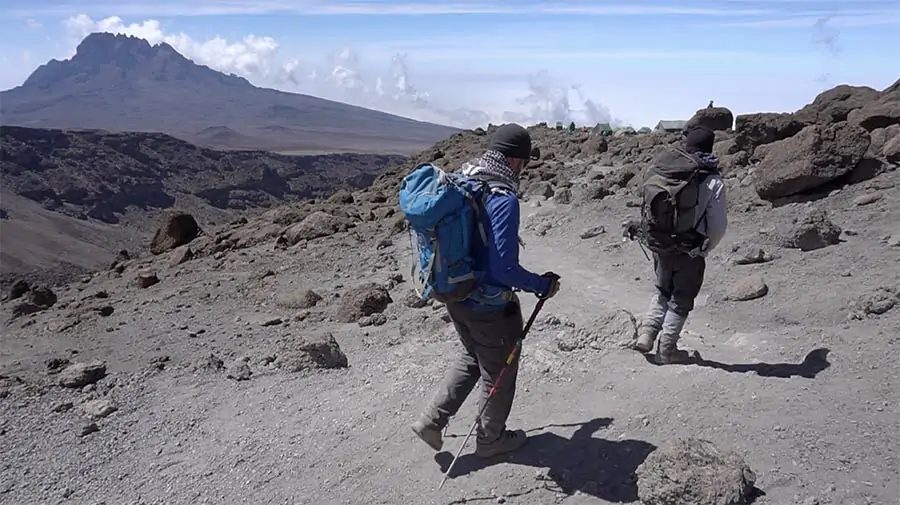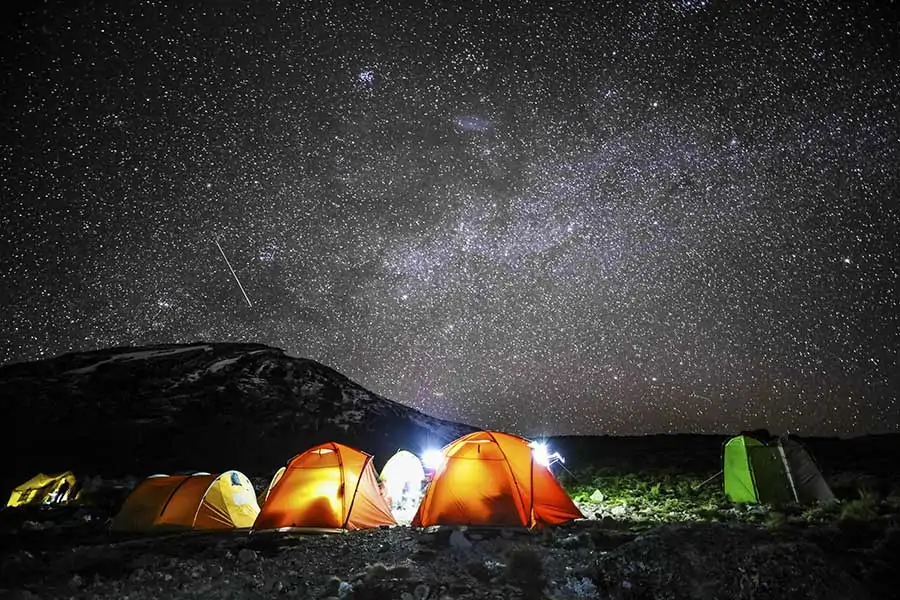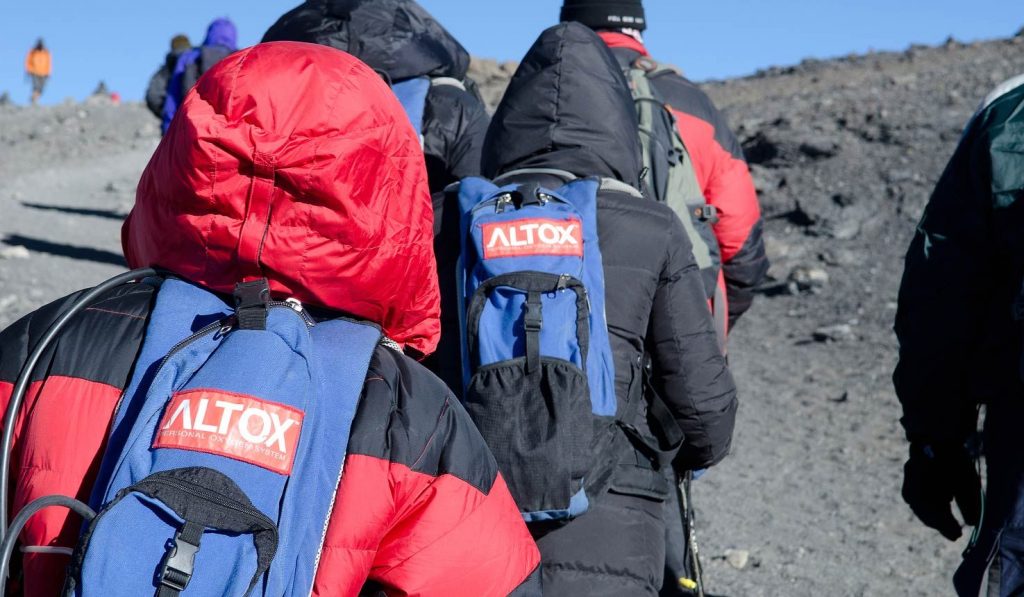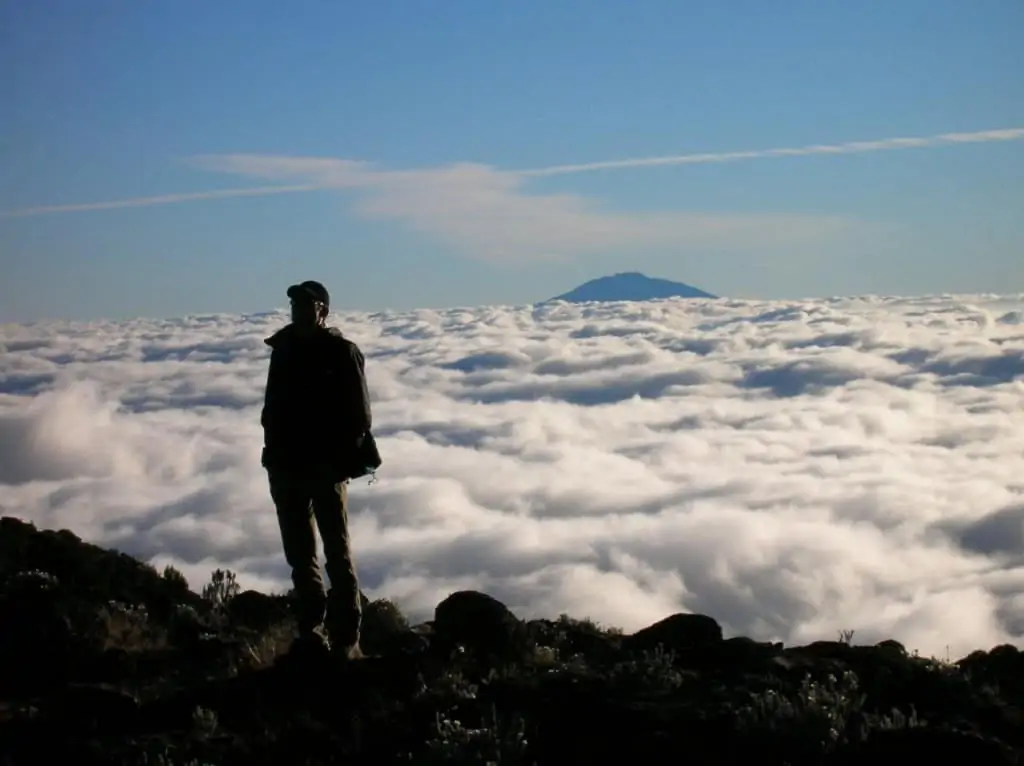
The main concern people have when climbing Kilimanjaro is how their body will respond to high altitude.
While some routes up Kilimanjaro are inherently more difficult than others, almost all of them would be considered mere hiking trails if they were located at sea level. In fact, one of the reasons that so many visitors, even those who are inexperienced trekkers, can successfully climb the world’s tallest free-standing mountain is that the route profiles themselves are not that strenuous. For the most part, the day to day hikes and the elevation changes are mild to moderate. But high altitude is the component that changes everything. And your ability to deal with it will make or break your Kilimanjaro climb.
WHAT ARE KILIMANJARO’S ALTITUDE ZONES?
During your climb of Mount Kilimanjaro, you will pass through three altitude zones. These zones are:
- High altitude 8,200 ft – 11,400 ft (2,500 – 3,500m)
- Very high altitude 11,400 ft – 18,000 ft (3,500 – 5,500m)
- Extreme altitude above 18,000 ft (5,500m)
Most people can ascend to 7,800 ft (2,400 m) without experiencing the effects of high altitude. However, as a person enters the high altitude zone these changes in air density and thus the amount of available oxygen begins to take effect.
How each person reacts to this change in oxygen saturation is unpredictable. It is not altered by the fitness level of the climber. It can also change by the day and by elevation. What effects a person one day may not affect them at all the very next day, week or month. There is also no correlation between age and gender.
WHAT HAPPENS TO THE BODY AT HIGH ALTITUDE?
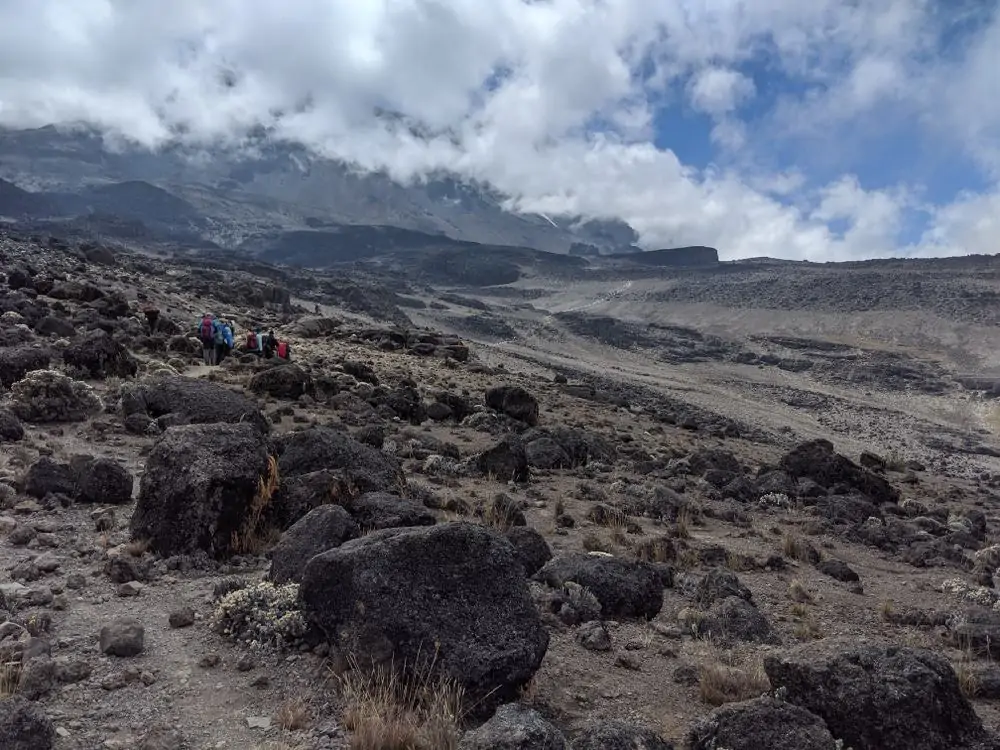
In order to understand why altitude is such a big deal, it helps to know exactly what it does to your body. The short answer is that the higher you go, the less oxygen there is available.
At sea level oxygen accounts for about 21% of air and the barometric pressure is around 760 mmHg (milliliters of mercury) or 1 atm (atmosphere). As you climb the mountain the amount of oxygen in the air remains about the same up to approximately 69,000 ft. (21,000m). However, as the air density drops there is now less pressure packing the oxygen molecules together. In short, the molecules are now moving farther apart. With less air density the oxygen molecules are more widely dispersed in any given amount of air and hence less oxygen is available per breath.
When your body detects that it’s getting less oxygen than it’s used to, it makes you breathe deeper and faster in order to compensate. The heart beats faster too, to deliver more oxygen to your body. More red blood cells are created to increase its oxygen carrying capacity. Other adaptations occur in blood acidity level, lung pressure, electrolyte levels, and fluid and salt balance. But despite these adaptations, your body is still operating at an oxygen deficiency.
Acclimatization is the term used for when the body adapts to the lower air pressure and decreased levels of oxygen. This is a gradual process that takes place over hours and days. The rate of acclimatization is different for everyone, and appears to have a genetic link. When acclimatization lags, altitude sickness, which is commonly referred to as acute mountain sickness (AMS), develops.
WHAT ARE THE SYMPTOMS OF ALTITUDE SICKNESS?
Most people will have a mild reaction to elevation. Below are some common symptoms of altitude sickness:
- Headache: Throbbing, it gets worse during the night and when you wake up.
- Loss of Appetite: No desire to eat or drink.
- Nausea: Feeling sick to your stomach. You may also vomit.
- Lethargic: Feeling weak and tired. In severe cases, you do not have the energy to eat, dress, or do anything.
- Insomnia: Waking up constantly during the night or not sleeping at all.
- Dizziness: You may feel dizzy and disoriented.
It’s impossible to tell if you’ll be susceptible to AMS before you are exposed to altitude. Therefore, it is always best to to ascend slowly to allow the body more time to adjust to the low oxygen environment. People who do not spend enough time acclimatizing to a new altitude before climbing higher increase the risk of developing altitude sickness.




